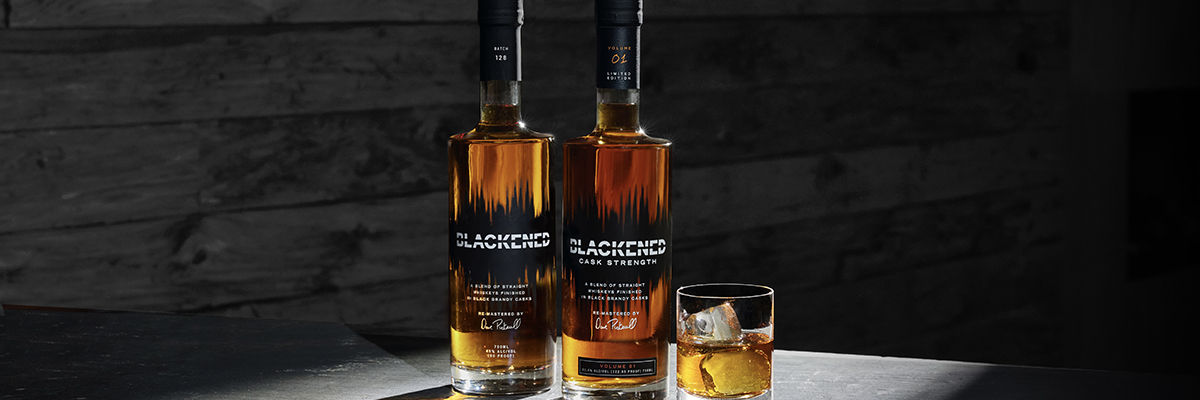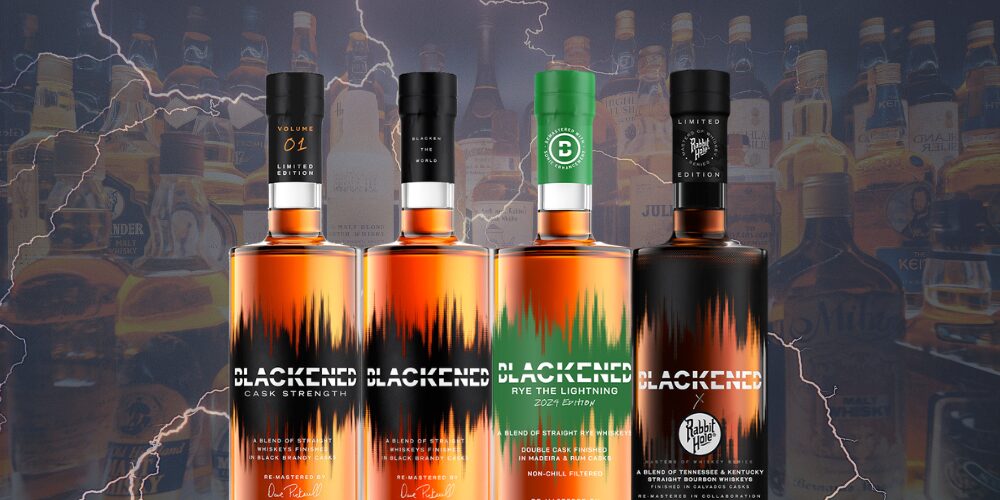Drinking whiskey on the rocks can open up its smell and taste. Learn what kind of ice is best for whiskey, the science behind ice in whiskey, and its history.
When it comes to enjoying the bold taste of whiskey outside of cocktails, there are two paths: neat or on the rocks. Here, we’re exploring all the reasons to grab a bottle of BLACKENED® Whiskey, break out the ice, and enjoy your whiskey on the rocks.
Should You Put Ice in Your Whiskey?
First and foremost, BLACKENED® Master Distiller & Blender Rob Dietrich has a message for you: “You do you. Ice or no ice, there aren’t any rules when you’re the one making them up.” Whether you should put ice in your whiskey is a personal choice, and we’re here to help you decide what’s best for you.
“While I prefer to taste whiskey neat, I wholeheartedly believe that ice is a close friend,” says Rob. “Well-made ice can make for a pleasant whiskey experience, with the light amount of water from the melting ice allowing the whiskey to open up, releasing new layers of flavor.”
“While I prefer to taste whiskey neat, I wholeheartedly believe that ice is a close friend,” says Rob. “Well-made ice can make for a pleasant whiskey experience, with the light amount of water from the melting ice allowing the whiskey to open up, releasing new layers of flavor.”
The Science Behind Ice in Whiskey
Unlocking the secrets behind the perfect pour of whiskey involves delving into the fascinating world of science. At the heart of whiskey’s distinctive aroma and flavor is guaiacol. This aromatic compound infuses whiskey with its signature smoky, woody, and sometimes even fruity notes. Now, here’s where the chilling effect of ice comes into play. Adding the right amount of ice or water to your glass acts as a catalyst, diluting the whiskey slightly. This dilution can enhance the overall sensory experience by pushing guaiacol up to the surface, intensifying its presence, and allowing your olfactory senses to revel in its glory.
But the science of ice in whiskey does not stop there. Lowering the temperature of the alcohol by adding ice not only enhances the aroma and taste but also provides a unique benefit for whiskey enthusiasts: it removes the “burn triggers” in the brain. When whiskey is served neat, the high alcohol content can often create a fiery sensation on the palate. However, as the ice cools the whiskey, it suppresses those burn triggers, allowing you to fully appreciate the intricate flavors and nuances without the overwhelming sensation of alcohol’s raw intensity. It’s the ultimate symphony of temperature, chemistry, and taste, creating a captivating experience for every whiskey lover.
But the science of ice in whiskey does not stop there. Lowering the temperature of the alcohol by adding ice not only enhances the aroma and taste but also provides a unique benefit for whiskey enthusiasts: it removes the “burn triggers” in the brain. When whiskey is served neat, the high alcohol content can often create a fiery sensation on the palate. However, as the ice cools the whiskey, it suppresses those burn triggers, allowing you to fully appreciate the intricate flavors and nuances without the overwhelming sensation of alcohol’s raw intensity. It’s the ultimate symphony of temperature, chemistry, and taste, creating a captivating experience for every whiskey lover.
History of Ice in Whiskey
The origin of the term “on the rocks” takes us on a journey to the Land of the Rising Sun, where the art of whiskey (styled ‘whisky’ in Japan) consumption reached new heights of sophistication. The practice of adding ice to whiskey goes back to the Japanese, who viewed it as a symbol of nobility and refinement. In Japanese culture, chilling the whiskey with ice was not only a means to lower the temperature but also a way to elevate the drinking experience.
The addition of ice was seen as a mark of discernment, demonstrating one’s appreciation for the intricate flavors and aromas of the spirit. Over time, this elegant tradition traveled across continents, captivating whiskey enthusiasts worldwide and giving rise to the widely recognized phrase “on the rocks.”
The addition of ice was seen as a mark of discernment, demonstrating one’s appreciation for the intricate flavors and aromas of the spirit. Over time, this elegant tradition traveled across continents, captivating whiskey enthusiasts worldwide and giving rise to the widely recognized phrase “on the rocks.”
How to Drink Whiskey With Ice
Inspired by the collaboration with Metallica, legendary Master Distiller Dave Pickerell pioneered an adapted whiskey distilling process to create the award-winning, super-premium straight bourbon-rye whiskey blend, BLACKENED American Whiskey. This distilling process is also used by Master Distiller & Blender Rob Dietrich to create BLACKENED’s Cask Strength Whiskey.
- Ice Blocks: These large, rectangular ice blocks are ideal for those who prefer a slow melt. They provide a gradual cooling effect, maintaining the whiskey’s temperature without diluting it too quickly.
- Ice Spheres: The spherical shape of these ice cubes offers a slower melting rate than traditional cubes. They are visually striking and can add an elegant touch to your whiskey glass while cooling the drink evenly.
- Whiskey Stones: Whiskey stones are non-porous rocks you can chill in the freezer and add to your drink. They provide a mild cooling effect without diluting the whiskey. These reusable stones offer a convenient option for those who prefer straight whiskey but still want a cooled dram.
- Crushed Ice: Crushed ice can be a popular choice for those seeking a quick chill and faster dilution. The smaller ice particles melt faster, rapidly cooling the whiskey and potentially altering its flavor profile.
“The most important thing to note,” says Rob, “is that you must make ice with filtered or purified water. People often overlook that water from the tap has been treated with chlorine, and that taste will show up in the ice, which can ruin an otherwise enjoyable experience.”
With a wide range of ice options available, select the type that best suits your preferences, whether a slow melt, controlled dilution, or a quick chill, to adapt the drinking experience to your liking.
How Much Ice Should You Add to Whiskey
When it comes to the amount of ice to add to whiskey, it ultimately boils down to personal preference. Each whiskey drinker has a desired balance between temperature, dilution, and flavor concentration. While there are no hard and fast rules, adding 1-2 large ice pieces to your glass is a general guideline.
This allows for a gradual cooling effect and a slower dilution rate, giving you time to savor the whiskey’s complexities as it opens up. However, it’s essential to remember that there’s no one-size-fits-all approach. Some may prefer more ice, while others may opt for minimal or none to fully appreciate the whiskey’s original character. Experimentation and discovery are vital in finding your perfect whiskey-ice equilibrium.
So, explore the possibilities, tailor the ice quantity to suit your taste, and revel in each pour’s unique journey.
This allows for a gradual cooling effect and a slower dilution rate, giving you time to savor the whiskey’s complexities as it opens up. However, it’s essential to remember that there’s no one-size-fits-all approach. Some may prefer more ice, while others may opt for minimal or none to fully appreciate the whiskey’s original character. Experimentation and discovery are vital in finding your perfect whiskey-ice equilibrium.
So, explore the possibilities, tailor the ice quantity to suit your taste, and revel in each pour’s unique journey.
Enjoy BLACKENED® American Whiskey on the Rocks
“The preference for ice or no ice has always been subjective,” says Rob, “and ultimately, the choice is up to you.” Order BLACKENED® on our website or find a retailer near you.













